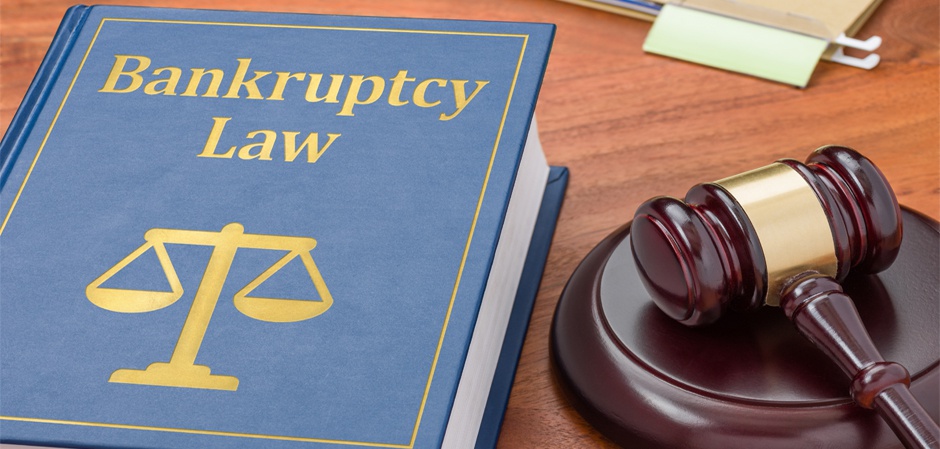This is a terrible word "bankrupt"
part 1part 2
Yanis Yuksha, practicing lawyer, Candidate of Law, Professor, member of the Expert Council of the Moscow Region Chamber of Advocates answers our questions regarding the Federal Law "On Insolvency (Bankruptcy)».

Yanis Alexandrovich, tell us what is the bankruptcy procedure for legal entities.
The bankruptcy procedure takes place in several stages. The first stage is observation. It begins with the submission to the arbitration court of an application for recognition of the debtor company as bankrupt. The owners of the enterprise or its creditors can submit such an application. The arbitration court first of all checks whether this bankruptcy is fictitious or intentional. For a period of up to four months, government agencies analyze the real financial situation of the company. The property becomes inviolable, a register of creditors and their claims is compiled, a creditors' meeting is held. Supervision is a mandatory measure that is carried out with any method of bankruptcy. The Arbitration Court appoints a temporary manager who controls the actions of the company's management. Without the permission of the temporary manager, it is impossible to dispose of property in the amount of more than 5% of the book value of the assets of the enterprise, to receive and issue loans, guarantees and guarantees. The list of prohibitions on independent activity may be expanded by the court.
The next stage is financial recovery. Creditors may apply to the arbitration court with a request to introduce financial rehabilitation as part of the bankruptcy procedure of a legal entity. After the announcement of the rehabilitation procedure, the court appoints an administrative manager. The management of the enterprise or its founders develop a plan for the improvement of the enterprise and draw up a schedule for debt repayment, which are approved by a meeting of creditors. To calculate the debts, their restructuring is carried out taking into account all the claims of creditors included in the special register. Moreover, the debts of creditors of the first and second stages must be settled within 6 months from the beginning of the period, and all debts must be fully repaid no later than a month before the end. At this stage, it is impossible to make independent decisions that lead to an increase in the debt burden of the company, all actions must be coordinated with the administrative manager. Also at this stage, the payment of dividends, the purchase of own shares is prohibited, the accrual of fines, penalties and other sanctions on payments is suspended. This stage can last up to two years.

The third stage of the bankruptcy procedure of a legal entity is external management. If financial recovery measures have not brought results, the company is given a second chance. Creditors apply to the arbitration court, which appoints an external manager and introduces an external management procedure, which can last 18 months, plus, at the discretion of the court, an additional 6 months. For this period, a moratorium on creditors' claims is introduced, penalties and fines on debts are not accrued. This makes it possible to use the funds intended for the payment of debts to restore their own solvency. The external manager is a key figure in the bankruptcy procedure of a legal entity. He also develops an external management plan, which is approved by creditors. By and large, the manager can greatly transform the appearance of the future enterprise. Unprofitable production facilities may be closed or repurposed and part of the property or the entire company may be sold off. It is usually these events that are most dramatically perceived by the press and society, as they are associated with layoffs and job cuts. The external manager acts much more rigidly, and puts the preservation of the brand and the most valuable assets at the forefront. Possible outcomes of external management: restoration of solvency, settlement agreement between creditors and the company, extension of the work of an external manager or the introduction of bankruptcy proceedings.
The final stage is bankruptcy proceedings. At this stage, the arbitration court appoints a bankruptcy trustee, who, involving financial specialists, determines the bankruptcy estate: the company's funds, including current, intangible assets, accounts receivable, as well as other assets of the debtor. The accrual of penalties, fines, penalties and other penalties for non-fulfillment of payments is stopped. The company's transactions are not conducted, the seizure of property is removed, the powers of the head of the debtor company are terminated. The property is being evaluated, which is being put up for public auction. Bankruptcy proceedings can last up to 18 months. Even at this stage, the manager may find that the company's assets are sufficient to restore solvency. In this case, the manager must convene a meeting of creditors and make a motion to switch to external management and restore the company's work. At any stage of bankruptcy, it is possible to sanitize the enterprise and restore the debtor's solvency. This can be done by the creditors of the enterprise, the owners or founders of the company, as well as other persons.

In addition to such a long process, there is a simplified procedure for bankruptcy of a legal entity. It is used when it is not a question of continuing work. First of all, a legal entity is liquidated. A corresponding entry is made in the Unified State Register of Legal Entities with the publication in the "Bulletin of State Registration" of information that the company is in the process of liquidation. Two months after that, the initiator of the liquidation notifies creditors of bankruptcy and applies for bankruptcy to the arbitration court. If the court finds the application justified, the evidence of insolvency is weighty and sufficient, then it makes a decision to declare the debtor bankrupt. The procedure of bankruptcy proceedings is introduced, a bankruptcy trustee is appointed. This stage lasts no more than 6 months.
Author: Svetlana Skobeleva
Photo: shutterstock.com











